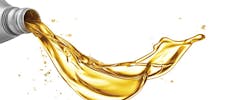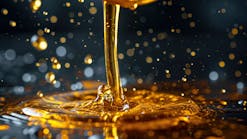On April 3, 2019, the API Auto/Oil Approval Panel (AOAP) voted by voice to prepare a ballot to add API SP and SP Resource Conserving to the approved category list for API engine oils. The API Lubricant Standards Group also voted by voice to letter ballot the issue. The companion ILSAC products GF-6A and GF-6B are also included in the ballot. On May 8, the ballots were counted and all were approved! The last step in the process is the one year demonstration period to be carried out beginning in May 1, 2019, and the long awaited categories be officially introduced to the marketplace.
This has been an eight-year process that started with a request from auto makers in 2012 for a new API category to meet new industry engine designs. At the time, the International Lubricants Specifications Advisory Committee (ILSAC) identified needs for next generation oils; already known as GF-6A and GF-6B. ILSAC is the organization which represents auto maker interests and is made up of North American and Japanese OEMs.
A summary of the ILSAC request asked that GF-6A replace the then current GF-5, (API SN and SN Resource Conserving) both represented by the Starburst/Certification Trademark. It would have to result in a balance among several equally important needs including the following:
- Improved fuel economy and fuel economy retention
- Increased engine oil robustness to provide performance levels required to protect engines in all global markets
- Adjustment to chemical limits to allow improved performance while maintaining overall durability performance.
In addition, ILSAC wanted to see additional performance features added. These included increased fuel economy durability, enhanced oil robustness, and improved formulations to protect against low speed pre-ignition. In addition there were identified needs for Idle Stop engine protection, wear improvements for timing chains and improvements in air entrainment properties.
GF-6B included all of the requested improvements for GF-6A and at lower viscosity. GF-6A has a minimum viscosity of HTHS150 of 2.6 mPa-sec. while GF-6B has a maximum viscosity of HTHS150 of 2.6 mPa-sec.
GF-6A and GF-6B categories would need to include the same engine tests (or updated versions) as GF-5. In addition, it would require two completely new tests. By the time the process was completed, seven of the ten total engine test procedures required an essentially new test and/or procedure. The only difference between GF-6A and GF-6B is the high temperature high shear viscosity limit.
While the physical and chemical tests have not changed, in some cases there are new test limits. Such things as seal swell characteristics, bench deposit tests, corrosion tests, and rust tests are required. Although not likely, sometimes when new additive chemistries are included, some of these tests can go off the rails. All of that had to be confirmed.
The original target for introduction of GF-6A and GF-6B was 2017 to meet new government emissions and fuel economy requirements. There were barriers that made it impossible to conform to that timeline. Among them was the fact that API CK-4 and FA-4 also needed to be developed over the same time frame. Since API CK-4 and FA-4 had fewer test development requirements, it went first. GF-6A and GF-6B would be introduced second.
The fact that GF-6A and GF-6B had seven new tests to introduce proved to be a real issue since the time and cost to develop a new test can be large. In addition, the replacement wear test, known as the Sequence IVB was much more difficult than first imagined. The test it replaced, Sequence IVA, was a relatively easy test and was very reliable. The Sequence IVB was much more difficult and required a long time to finally be brought into the system.
One of the requirements for any new engine oil category is that oils meeting the latest also had to meet prior categories. The term used to describe this is backwards compatibility. Particularly for the Sequence IVB, this was elusive since the oils used to reference the test didn’t do so at first. This slowed the process down by at least a year or two.
Once the tests were all developed and proven to be repeatable and reproducible, it took time to develop two other requirements: viscosity grade read-across and base oil interchange. These two are important from the standpoint of making test work cost effective. Each full program is estimated to cost upwards of 750 thousand dollars. If changes in base stocks or multiple viscosities can be covered with one or two tests it makes it much easier and more cost effective to develop new products.
The methodology is similar in both cases. The most difficult base stock or viscosity grade is chosen to run selected engine tests. Based on the results and comparisons which have already been developed, another oil or viscosity grade can be approved using minimal testing. For example: If a complete test approval program is run on base stock A, base stock interchange guidelines can be used to approve other base stocks by running only a few tests. In the case of viscosity grades, the most severe grade is used to run the program and following similar protocols, additional viscosity grades can be approved.
All of the details of development and limit setting have been done. The passage of the ballot starts a one year demonstration period which will follow allowing all of the additive companies and oil marketers to get their products developed and approved for sale. That includes new labeling, new product data sheets and advertising.
The first licensing date will be a party time for the industry; but the next day the GF-7 development process will begin. It never ends.






